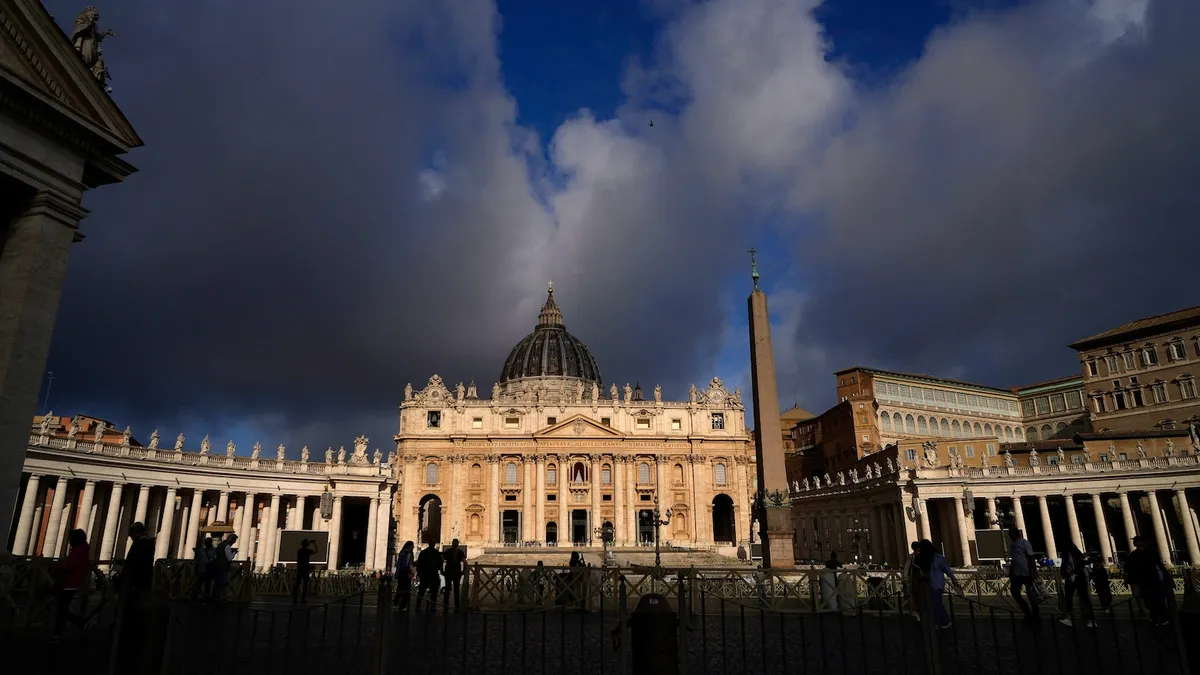
The papal conclave, a clandestine election procedure designed to appoint the next leader of the Roman Catholic Church, is set to begin on Wednesday. This significant event will see cardinals from around the globe convene to select the 267th pope. Following the passing of Pope Francis on April 21, a total of 220 cardinals, the church's highest-ranking clergy, have gathered in Rome to honor the late pontiff and initiate the secretive conclave.
During this conclave, 133 cardinals will cast their votes, marking it as the largest group of electors in history. Notably, 108 of these cardinals were appointed by Pope Francis himself. All cardinals under the age of 80 are eligible to participate in this crucial election process. The majority of the voting cardinals hail from Europe, with Italy contributing 17 electors, followed by five from Spain and five from France. North America will see 16 cardinal electors, including 10 from the United States.
Additional representation includes four cardinals from Central America, 17 from South America, 18 from Africa, 23 from Asia, and four from Oceania. Argentina, the homeland of Pope Francis, has four cardinal electors in attendance.
On the morning of the conclave, all 220 cardinals are expected to attend a mass at St. Peter's Basilica at approximately 10 a.m. local time. Following the mass, the voting cardinals will proceed to the Pauline Chapel, then make their way to the Sistine Chapel around 4:30 p.m. local time, where the voting will officially take place.
Before the voting begins, all cardinal electors will take an oath of secrecy. Voting sessions will occur twice daily, with two rounds in the morning and two in the evening. The voting process commences when the Master of Ceremony announces "extra omnes" — or "everyone out" — around 5 p.m. local time. The goal is to reach a consensus with a two-thirds majority of the cardinals agreeing on the new pope.
After each voting round, the ballots are burned, producing smoke that signals the outcome to the outside world. Black smoke indicates that a decision has not yet been reached, while white smoke signifies that a new leader of the church has been elected. It is possible for a pope to be chosen as soon as the first ballot; however, the process could extend over several days. Notably, since 1831, no conclave has lasted longer than four days.
Typically, up to four rounds of voting are conducted each day. If a clear choice has not emerged after three days, balloting will be suspended for 24 hours to allow the cardinal electors to reflect. Following this pause, seven additional rounds of voting occur, potentially followed by another break. If no pope is elected after approximately 13 days or 33 to 34 votes, a rule established by Pope Benedict XVI mandates a runoff vote between the two leading candidates from previous ballots.
Cardinal Jean-Paul Vesco, the archbishop of Algiers, expressed to ABC News that it would be surprising if the conclave extends beyond Friday. Similarly, Cardinal Louis Raphael Sako of Baghdad stated last week that he anticipates a brief conclave, estimating it will last only two to three days. When pressed about his voting preference for the new pope, Sako remarked that he has a clear idea but could not disclose it.
Since the death of Pope Francis, speculation has arisen regarding potential candidates for the papacy. While any baptized male Catholic is eligible to succeed him, experts suggest that Cardinal Pietro Parolin, the cardinal secretary of state, and Cardinal Luis Tagle, the archbishop of Manila, are frontrunners. Additionally, Cardinal Robert Prevost from the United States has begun to emerge as a significant contender, as noted by Father James Martin, a papal contributor for ABC News.
Father Martin emphasizes that the cardinals will seek a leader who is holy, adept at evangelizing the gospel, and possesses strong managerial skills. He acknowledges that finding these three qualities in a single individual is quite challenging.
Throughout the conclave, all forms of recording technology are strictly prohibited. Technicians will conduct thorough checks to ensure no hidden devices are present in the Sistine Chapel or adjacent areas. Upon the commencement of the conclave, the cardinals' cellphones will be confiscated and returned only after the election of the new pope.
This conclave represents a pivotal moment in the history of the Roman Catholic Church, as cardinals from diverse backgrounds come together to elect a new leader who will guide millions of Catholics worldwide.